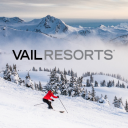/ factorpad.com / stocks / f25rfg.html
An ad-free and cookie-free website.
Our quantitative data points are meant to provide a high-level understanding of factors in equity risk models for Vail Resorts Inc. Portfolio managers use these models to forecast risk, optimize portfolios and review performance.
We show how MTN stock compares to 2,000+ US-based stocks, and to peers in the Accommodation and Food Services sector and Hotels (except Casino Hotels) and Motels industry.
Please do not consider this data as investment advice. Data is downloaded from sources we deem reliable, but errors may occur.
 Vail Resorts, Inc., through its subsidiaries, is the leading global mountain resort operator. Vail Resorts' subsidiaries operate 37 world-class destination mountain resorts and regional ski areas, including Vail, Beaver Creek, Breckenridge, Keystone and Crested Butte in Colorado; Park City in Utah; Heavenly, Northstar and Kirkwood in the Lake Tahoe area of California and Nevada; Whistler Blackcomb in British Columbia, Canada; Perisher, Falls Creek and Hotham in Australia; Stowe, Mount Snow, Okemo in Vermont; Hunter Mountain in New York; Mount Sunapee, Attitash, Wildcat and Crotched in New Hampshire; Stevens Pass in Washington; Liberty, Roundtop, Whitetail, Jack Frost and Big Boulder in Pennsylvania; Alpine Valley, Boston Mills, Brandywine and Mad River in Ohio; Hidden Valley and Snow Creek in Missouri; Wilmot in Wisconsin; Afton Alps in Minnesota; Mt. Brighton in Michigan; and Paoli Peaks in Indiana. Vail Resorts owns and/or manages a collection of casually elegant hotels under the RockResorts brand, as well as the Grand Teton Lodge Company in Jackson Hole, Wyoming. Vail Resorts Development Company is the real estate planning and development subsidiary of Vail Resorts.
Vail Resorts, Inc., through its subsidiaries, is the leading global mountain resort operator. Vail Resorts' subsidiaries operate 37 world-class destination mountain resorts and regional ski areas, including Vail, Beaver Creek, Breckenridge, Keystone and Crested Butte in Colorado; Park City in Utah; Heavenly, Northstar and Kirkwood in the Lake Tahoe area of California and Nevada; Whistler Blackcomb in British Columbia, Canada; Perisher, Falls Creek and Hotham in Australia; Stowe, Mount Snow, Okemo in Vermont; Hunter Mountain in New York; Mount Sunapee, Attitash, Wildcat and Crotched in New Hampshire; Stevens Pass in Washington; Liberty, Roundtop, Whitetail, Jack Frost and Big Boulder in Pennsylvania; Alpine Valley, Boston Mills, Brandywine and Mad River in Ohio; Hidden Valley and Snow Creek in Missouri; Wilmot in Wisconsin; Afton Alps in Minnesota; Mt. Brighton in Michigan; and Paoli Peaks in Indiana. Vail Resorts owns and/or manages a collection of casually elegant hotels under the RockResorts brand, as well as the Grand Teton Lodge Company in Jackson Hole, Wyoming. Vail Resorts Development Company is the real estate planning and development subsidiary of Vail Resorts.
Many of the following risk metrics are standardized and transformed into quantitative factors in institutional-level risk models.
Rankings below represent percentiles from 1 to 100, with 1 being the lowest rating of risk.
Stocks with higher beta exhibit higher sensitivity to the ups and downs in the market. (↑↑)
Stocks with higher market capitalization often have lower risk. (↑↓)
Higher average daily dollar volume over the past 30 days implies lower liquidity risk. (↑↓)
Higher price momentum stocks, aka recent winners, equate to lower risk for many investors. (↑↓)
Style risk factors often include measures of profitability and payout levels.
Companies with higher earnings generally provide lower risk. (↑↓)
Companies with higher dividend yields, if sustaintable, are perceived to have lower risk. (↑↓)
/ factorpad.com / stocks / f25rfg.html
A newly-updated free resource. Connect and refer a friend today.